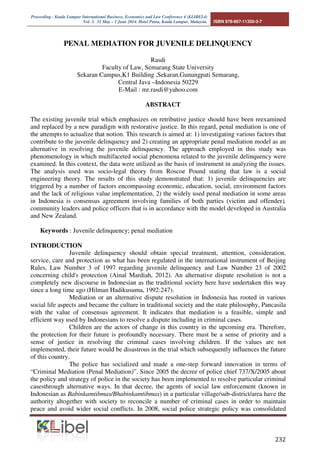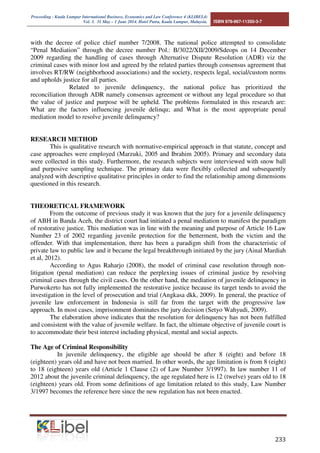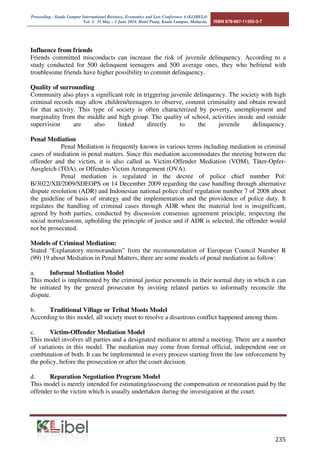The document discusses penal mediation as an alternative approach for resolving juvenile delinquency cases in Indonesia. It finds that juvenile delinquency is influenced by factors such as identity issues, lack of self-control, family problems, poor quality of surroundings, and economic issues. The document examines different models of penal mediation used internationally and describes the consensus-based model used in some areas of Indonesia which involves families, community leaders, and police. It argues penal mediation aligns with restorative justice and could be a better approach for juvenile cases compared to the traditional retributive system.









